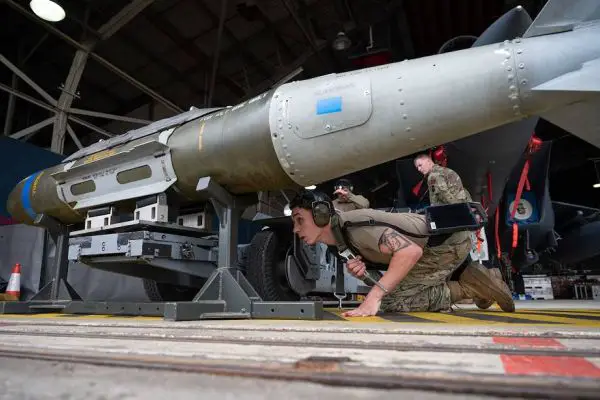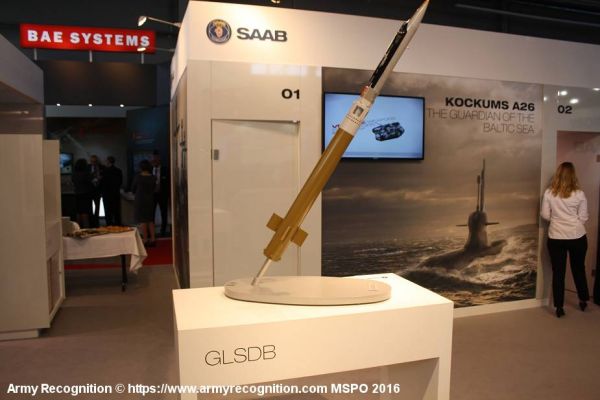Bombs.
AASM Hammer.

The Armement Air-Sol Modulaire (AASM), commonly known as the AASM Hammer (Highly Agile Modular Munition Extended Range), is a French-developed, all-weather, smart air-to-surface stand-off weapon. Designed by the French Company Safran Electronics & Defense, the Hammer is meant for both close air support and deep strike missions. This system is highly modular, allowing it to be configured for a variety of operational needs. By adding guidance and propulsion kits to standard bombs, the AASM Hammer transforms conventional ordnance into precision-guided munitions, making it a critical tool for modern air forces.
Country users: France, Croatia, Egypt, India, Morocco, Qatar, Ukraine
Description
The AASM Hammer was developed to address the growing need for modular, precise, and all-weather capable air-to-ground munitions. Entering service with the French Air Force and Naval Aviation in 2007, the Hammer offers flexibility in its design, enabling it to be used with a variety of bomb sizes, including 125 kg, 250 kg, 500 kg, and 1000 kg configurations. The system’s modularity allows for different guidance and propulsion systems to be attached to the bombs, giving the munition extended range and enhanced accuracy.
There are three main variants of the AASM Hammer, each equipped with different guidance systems depending on the operational context. The baseline variant integrates a hybrid inertial navigation system (INS) combined with GPS guidance, allowing it to function in all weather conditions. Other variants incorporate either infrared homing or laser guidance in the nose-mounted guidance section, providing increased precision and the ability to engage moving targets. These options make the Hammer effective for both close air support missions and deep strikes, where it can be launched from a stand-off distance, allowing the aircraft to remain safely out of reach of enemy defenses.
The AASM Hammer has proven its effectiveness in combat. It is deployed primarily from the Dassault Rafale and Mirage 2000D aircraft, but its versatility has led to its integration into other platforms as well, such as the Dassault Mirage F1, F-16, Tejas, and MiG-29. Recently, the system has been supplied to Ukraine, with over 600 Hammer bomb kits planned for delivery at a rate of 50 kits per month. It is likely that Ukrainian aircraft such as the MiG-29 and Su-27—already configured to drop JDAM-ER munitions—will be capable of employing the Hammer in combat.
AASM Hammer variants:
Host Bombs
The AASM system enhances conventional dumb bombs by integrating guidance kits and a solid fuel rocket motor. The standard AASM configuration is currently based on a 250 kg bomb, which is compatible with widely used bomb bodies such as the Mk 82, the BLU-111 penetrator, and the French CBEMS/BANG. A 125 kg bomb variant was successfully tested in 2009, and a 1,000 kg model has been proposed for future development to extend the system's versatility across a broader range of mission profiles.
Guidance Options
- SBU-38: The original model of the AASM, the SBU-38, is equipped with an inertial navigation system (INS) and GPS guidance, providing a Circular Error Probable (CEP) of 10 meters. This variant was introduced into service in 2007 and is effective in all-weather conditions, delivering reliable accuracy in both close air support and deep strike missions.
- SBU-54: The SBU-54 variant adds imaging infrared homing to the baseline SBU-38 model. This feature allows the munition to match the target area with a reference image stored in memory, increasing accuracy to a 1-meter CEP. The SBU-54 can operate both during the day and at night but achieves its highest accuracy in fair weather conditions.
- SBU-64: Introduced in 2013, the SBU-64 incorporates laser guidance on top of the existing INS/GPS capabilities found in the SBU-38. This variant allows for improved precision and, unlike the SBU-54, is effective against moving targets. The SBU-64 provides greater flexibility in dynamic combat scenarios, offering high accuracy across a range of environments and mission types.
Technical Data
-
Design
The AASM Hammer features a nose-mounted guidance section and a tail-mounted range extension kit, which includes winglets and a solid rocket motor to extend the munition’s range to over 70 kilometers (43 miles). The propulsion system is fitted at the rear of the missile and consists of a solid rocket motor and four winglets for flight control, ensuring stable and precise navigation during flight. The system can be fitted to bombs of various sizes, with the 250 kg configuration being the most common. This flexibility in design allows it to be used in a variety of mission profiles, from precision strikes on fixed targets to engagements against mobile units. The 250 kg (550 lb) configuration typically uses warheads such as the Mk82, BLU 111, or the French CBEMS/BANG bomb body.
-
Warhead
The AASM Hammer can be equipped with various warheads based on operational needs. The most common warhead size is 250 kg, but larger or smaller warheads can also be used, giving the Hammer a wide operational range. This makes it suitable for both large-scale strategic strikes and more tactical, smaller-scale engagements, depending on the mission’s objectives.
-
Guidance Systems
The AASM Hammer offers several guidance options depending on the mission requirements. The baseline variant uses a hybrid inertial navigation system (INS) coupled with GPS, providing all-weather accuracy with a Circular Error Probable (CEP) of approximately 10 meters (32 feet 10 inches). For more precise targeting, other variants feature infrared homing or semi-active laser homing (SALH), providing accuracy as fine as 1 meter (3 feet 3 inches) CEP. This flexibility ensures the Hammer can engage both stationary and moving targets with a high degree of precision.
-
Aircraft Launcher
The AASM Hammer is compatible with several aircraft types. It was initially deployed on the Dassault Rafale and Mirage 2000D but has since been adapted for other platforms, including the Dassault Mirage F1, F-16, Tejas, and MiG-29. The system’s modular design makes it easily adaptable to a wide variety of airframes, providing international air forces with a versatile weapon capable of precision strikes.
-
Combat Use
The AASM Hammer has proven its versatility in combat, being deployed for both close air support and deep strike missions. With an operational range of over 70 kilometers, the Hammer can engage targets from a safe stand-off distance, minimizing the exposure of the launch aircraft to enemy air defenses. The weapon is effective against fixed targets, including buildings, command centers, and infrastructure, as well as moving targets, such as vehicles and convoys. Its infrared homing and laser-guided variants are especially useful for tracking and engaging mobile or fast-moving targets, making the Hammer an essential asset in modern air-to-ground combat.
Specifications
-
Type
Precision-guided, air-to-surface, stand-off munition - bomb
-
Country users
France, Croatia, Egypt, India, Morocco, Qatar, Ukraine
-
Designer Country
France
-
Guidance Systems
- Hybrid Inertial Navigation System (INS) + GPS (SBU-38)
- INS + GPS + Imaging Infrared (SBU-54)
- INS + GPS + Laser Guidance (SBU-64) -
Launcher Aircraft
Dassault Rafale, Dassault Mirage 2000D, Dassault Mirage F1, F-16, Tejas, MiG-29,Su-27
-
Accuracy
- SBU-38: 10-meter CEP (Circular Error Probable)
- SBU-54: 1-meter CEP (infrared variant)
- SBU-64: 1-meter CEP (laser-guided variant) -
Launch Weight
Approximately 340 kg (750 lb) for the 250 kg warhead configuration.
-
Warheads
- 125 kg, 250 kg, 500 kg, and 1000 kg configurations
- Common warheads: Mk 82, BLU-111, CBEMS/BANG -
Range
Over 70 km (43 miles) with rocket-assisted propulsion.
-
Dimensions
Length: 3.1 m; Diameter: 0.32 m; Wingspan: 0.78 m






































